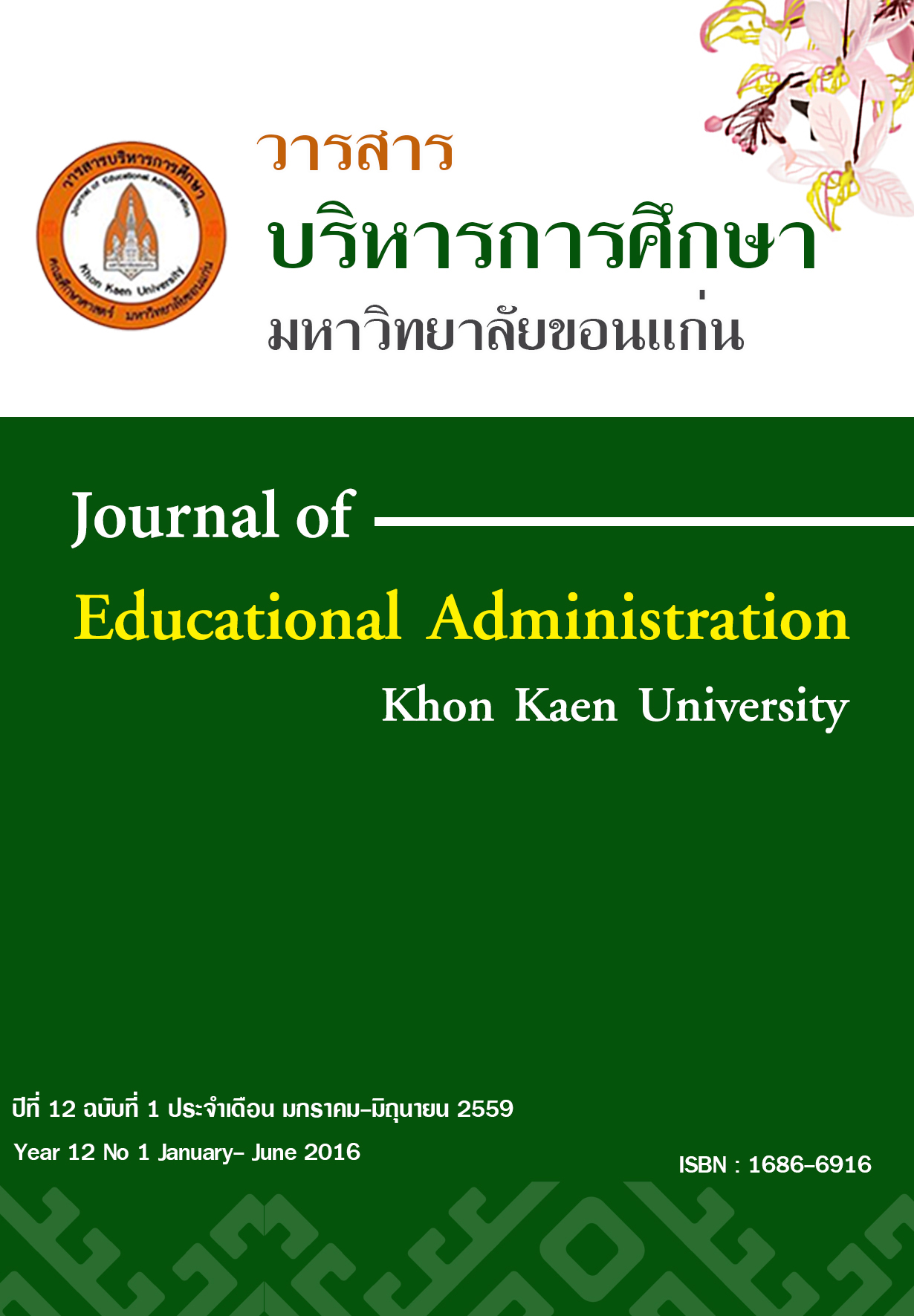รูปแบบการพัฒนาพฤติกรรมผู้นำทางวิชาการของผู้อำนวยการกองการศึกษา สังกัดองค์การบริหารส่วนตำบล จังหวัดศรีสะเกษ The Model for the Development of Academic Leadership Behaviors of Directors of Education Division under the Sub- district Administrative Organiza
Main Article Content
Abstract
การวิจัยครั้งนี้มีวัตถุประสงค์ 1) เพื่อศึกษาพฤติกรรมผู้นำทางวิชาการของผู้อำนวยการกองการศึกษาสังกัดองค์การบริหารส่วนตำบล จังหวัดศรีสะเกษ 2) เพื่อสร้างรูปแบบการพัฒนาพฤติกรรมผู้นำทางวิชาการของผู้อำนวยการกองการศึกษาสังกัดองค์การบริหารส่วนตำบล จังหวัดศรีสะเกษ 3) เพื่อประเมินรูปแบบการพัฒนาพฤติกรรมผู้นำทางวิชาการของผู้อำนวยการกองการศึกษา สังกัดองค์การบริหารส่วนตำบล จังหวัดศรีสะเกษ โดยใช้ระเบียบวิธีการวิจัยเชิงบรรยายประกอบด้วย 4 ขั้นตอน ขั้นตอนที่ 1ศึกษาพฤติกรรมผู้นำทางวิชาการดีเด่น จำนวน 15 คน ว่า ควรมีพฤติกรรมทางวิชาการเป็นอย่างไรจากบุคคลดีเด่นทางการศึกษา ขั้นตอนที่ 2 การศึกษาพฤติกรรมผู้นำทางวิขาการจากกลุ่มตัวอย่าง จำนวน 129 คน ว่ามีความต้องการอยู่ระดับใด ขั้นตอนที่ 3 การประเมินรูปแบบ เหมาะสม และความเป็นไปได้ จากผู้เชี่ยวชาญในการประเมินรูปแบบการพัฒนา จำนวน 10 คน ขั้นตอนที่ 4 การตรวจสอบรูปแบบการพัฒนาพฤติกรรมผู้นำทางวิชาการ จากผู้ทรงคุณวุฒิในการสนทนากลุ่ม จำนวน 12 คน ผลการวิจัยพบว่า
1) ผู้อำนวยการกองการศึกษามีความต้องการพัฒนาพฤติกรรมผู้นำทางวิชาการอยู่ในระดับมากทั้ง 8 ด้าน คือ การนิเทศและติดตามการนำหลักสูตรไปใช้ การสนับสนุนการพัฒนาวิชาชีพโดยการใช้วิจัยเป็นฐาน การสร้างความเข้าใจในกฎเกณฑ์การประเมินผล การสร้างและพัฒนาศักยภาพการเป็นผู้นำของบุคลากรและทราบกฎหมายระเบียบที่เกี่ยวข้อง มีความสามารถในการสื่อสารและใช้เทคโนโลยีสารสนเทศ ติดตามความก้าวหน้าของนักเรียนและโรงเรียน การเสริมสร้างความร่วมมือกับผู้ที่เกี่ยวข้อง ให้โอกาสครูและบุคลากรมีส่วนร่วมตัดสินใจในการพัฒนาวิสัยทัศน์
2) การสร้างรูปแบบการพัฒนาภาวะผู้นำทางวิชาการ รูปแบบประกอบด้วย แนวคิดหลักการ วัตถุประสงค์ของรูปแบบ กระบวนการพัฒนาประกอบด้วย การประเมินก่อนการพัฒนา การพัฒนาตามรูปแบบ การประเมินการหลังการพัฒนา การพัฒนาซ้ำและแนวทางที่จะนำรูปแบบไปใช้
3) ผลการตรวจสอบรูปแบบพบว่ามีความเหมาะสมและความเป็นไปได้อยู่ในระดับมากที่สุด
This research aimed to 1) study academic leadership behaviors of directors of Education Division under the Sub-district administrative organizations in Sisaket Province, 2) create the model for the development of academic leadership behaviors of directors of Education Division under the Sub-district administrative organizations in Sisaket Province and 3) assess the model for the development of academic leadership behaviors of directors of Education Division under the Sub-district administrative organizations in Sisaket Province. Descriptive research methodology consisted of 4 phase. Firstly, the study of the behaviors of 15 outstanding academic leaders was conducted in order to determine the desirable academic leadership behaviors. Secondly, the study of the academic leadership behaviors of 129 samples who were academic leaders was conducted to determine the need to develop their academic leadership behaviors. Thirdly, the assessment of the model including its appropriateness and possibility was carried out by 10 experts who specialized in the assessment of the development model. And fourthly, the examination of the model for the development of academic leadership behaviors was conducted by 12 experts during the group discussion.
Research findings showed that
1) Directors of Education Division needed to develop their academic leadership behaviors in the high level in 8 aspects: the supervision and the follow-up of the curriculum implementation, the support of the research-based vocational development, the creation of understanding in assessment criteria, the creation and development of personnel’s leadership potential as well as their acknowledgement of related laws and regulations, the skills involving communication and information technology literacy, keeping track of both student and school progress, the encouragement of the cooperation among related people, the embracement of teachers and staff’s participation in making decision relating vision development.
2) The creation of the model for the development of academic leadership behaviors consisted of the model’s concepts, principles, and objectives. The development procedures consisted of the assessment prior to the development, the model-based development, the assessment after the development, the re-development and the guidelines for the model implementation.
3) The examination of the model showed that its appropriateness and possibility were in the highest level.


